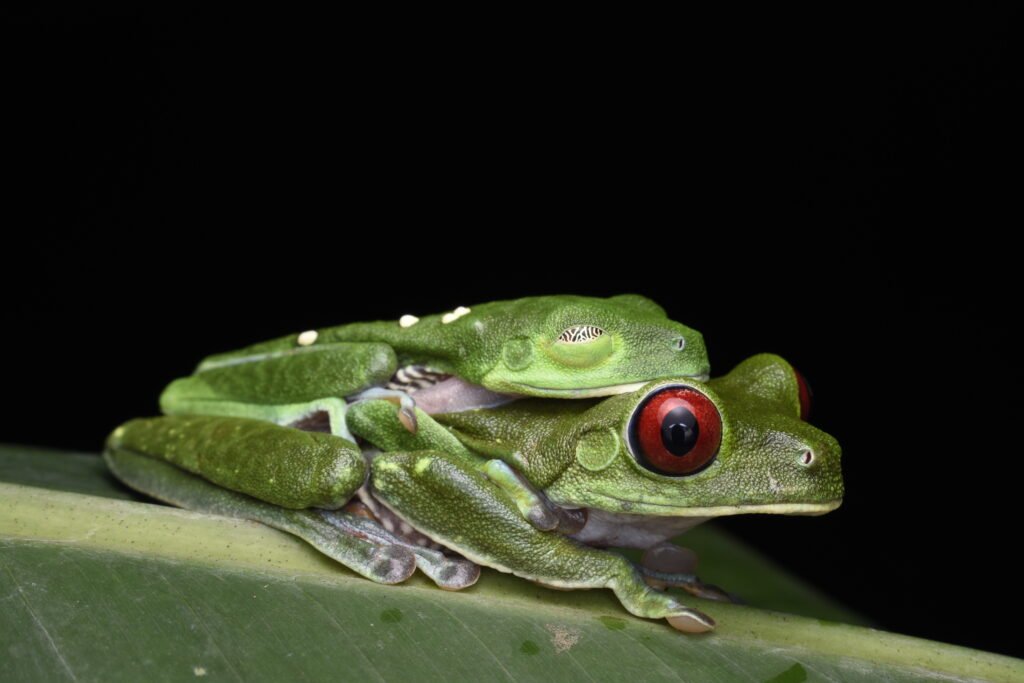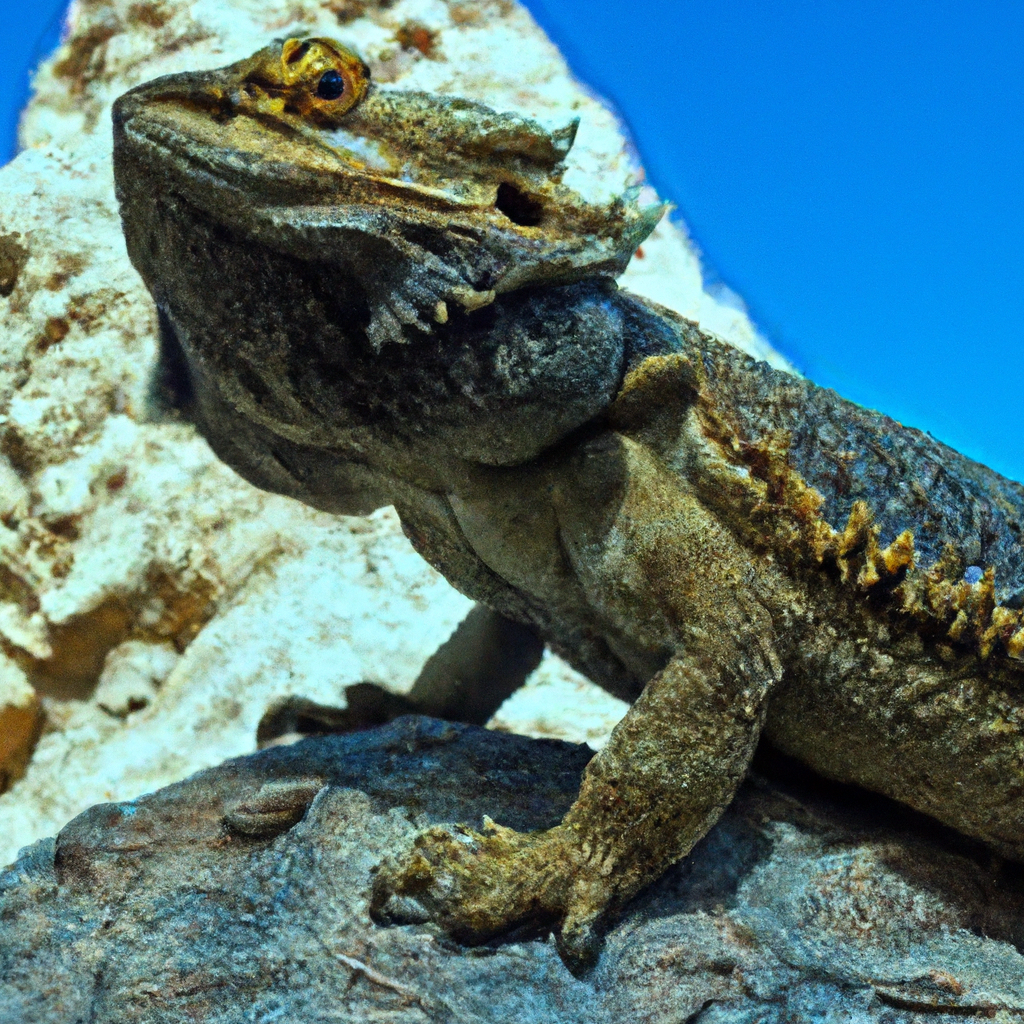Imagine yourself in the awe-inspiring world of nature, where amidst the sun-drenched landscapes and rugged terrains, a fascinating creature awaits your discovery. Enter the realm of the Dragón Barbudo, a reptile that captivates with its robust build and distinct appearance. From its spiky beard to its majestic scales, this incredible creature takes you on a journey through the wonders of the natural world. Join us as we uncover the secrets and marvels of the Dragón Barbudo en la Naturaleza.

Overview of Bearded Dragons
Bearded dragons are fascinating reptiles that belong to the genus Pogona. They are native to the arid regions of Australia and are known for their unique physical characteristics, docile nature, and attractive appearance. These reptiles have become increasingly popular as pets due to their manageable size and low maintenance requirements. In this article, we will explore various aspects of bearded dragons, including their physical characteristics, habitat, diet and feeding habits, behavior and social structure, and more.
Physical Characteristics
One of the most distinctive features of bearded dragons is their beard, which is a spiky flap of skin located under their chin. This beard can be puffed up when the dragon feels threatened or wishes to display dominance. They have a rugged appearance with rough, scaly skin and a robust body shape. On average, adult bearded dragons can grow up to 20 inches in length, with males typically being larger than females.
Bearded dragons also possess a remarkable range of colors and patterns. Their scales can be shades of brown, yellow, orange, or even red. Moreover, they have unique patterns such as stripes or spots, making each individual dragon beautifully distinct. These colors and patterns serve multiple purposes, including camouflage in their natural habitat.

Habitat
Bearded dragons are found in the arid regions of Australia. They inhabit a variety of habitats, including deserts, woodland areas, and semi-arid regions. These reptiles prefer areas with loose soil or sandy substrate, which allows them to dig burrows and create shelters. Bearded dragons are true masters of adaptation and are well-equipped to survive in harsh and dry environments.
During the day, bearded dragons are often found basking on rocks or branches to absorb sunlight and regulate their body temperature. They require a sufficient heat source to maintain their optimal body temperature, which makes them dependent on warm climates and basking spots. In their natural habitat, they have ample opportunities to thermoregulate by moving between shaded areas and direct sunlight.
Diet and Feeding Habits
Bearded dragons are omnivores, which means they consume both plant matter and insects. Their diet primarily consists of insects such as crickets, mealworms, and roaches. However, they also enjoy a variety of plant materials such as leafy greens, vegetables, and even fruit as occasional treats. It is essential to provide a well-balanced diet to meet their nutritional needs and promote their overall health.
Feeding habits of bearded dragons largely depend on their age. Young dragons have a higher protein requirement and consume more insects than adults. As they grow, their diet gradually shifts towards a greater emphasis on plant matter. Feeding should be done in a manner that allows them opportunities to hunt and exhibit natural feeding behaviors.

Behavior and Social Structure
Bearded dragons are known for their docile and placid nature, making them popular pets. They are generally tolerant of human interaction and can form bonds with their owners. Additionally, bearded dragons exhibit fascinating behaviors that reflect their natural instincts.
In the wild, bearded dragons are solitary creatures, often seen living alone or in small groups. They establish territories and communicate with other dragons through a series of visual displays and body language. Behaviors such as head bobbing, arm waving, and changing colors are common ways for them to interact and establish dominance.
Bearded dragons are diurnal, meaning they are most active during the day. They spend a significant amount of time basking to absorb heat and maintain their body temperature. When not basking, they explore their surroundings in search of food, water, and potential mates.
Natural Habitat of Bearded Dragons
Geographical Distribution
Bearded dragons are endemic to Australia and are found across various parts of the continent. They primarily inhabit the central and eastern regions of Australia, including Queensland, New South Wales, and parts of South Australia. The diverse habitats in these regions offer a wide range of environments for bearded dragons to adapt to.
Preferred Ecosystems
Bearded dragons thrive in arid ecosystems with sparse vegetation, such as deserts and dry woodlands. These environments provide them with the necessary conditions for burrowing, basking, and foraging. They are well-suited to tolerate extreme temperatures, ranging from scorching hot during the day to chilly temperatures at night. The arid regions of Australia, with their vast expanses of sandy or rocky terrain, offer perfect habitats for bearded dragons.
Environmental Adaptations
Bearded dragons have evolved several adaptations to survive in their harsh natural habitat. Their ability to dig burrows allows them to seek shelter from extreme temperatures and avoid predators. The spiky scales and robust body shape provide protection against potential threats, while their colors and patterns help them camouflage effectively in their environment.
Thermoregulation is vital for bearded dragons, as they depend on external heat sources to maintain their body temperature. Basking under the sun enables them to warm up, while seeking shade helps them cool down when necessary. These adaptations allow bearded dragons to thrive in the challenging conditions of their natural habitat.

Life Cycle and Reproduction
Egg Laying Process
Breeding in bearded dragons typically occurs during the spring and summer months. Female bearded dragons lay their eggs in shallow nests that they dig in sandy soil. The female may lay several clutches of eggs throughout the breeding season, with each clutch containing around 10 to 20 eggs.
Incubation Period
Once the eggs are laid, they undergo an incubation period of approximately 55 to 80 days, depending on the temperature and environmental conditions. The temperature at which the eggs are incubated determines the sex of the offspring, with higher temperatures resulting in more males and lower temperatures leading to more females.
Hatching and Early Life
After the incubation period, the hatchlings emerge from their eggs. At birth, they are miniature versions of their adult counterparts and are fully independent. The young dragons must fend for themselves from the moment they hatch, finding food and shelter to ensure their survival. They grow rapidly during the first few months and reach sexual maturity at around 12 to 18 months of age.
Adaptive Characteristics
Camouflage and Coloration
Bearded dragons possess remarkable camouflage abilities, allowing them to blend seamlessly into their surroundings. Their colors and patterns mimic the rocks, sand, and vegetation of their natural habitat, making them nearly invisible to predators. This camouflage serves as both a defensive mechanism and a means of ambushing prey.
Thermoregulation
Thermoregulation is a crucial aspect of bearded dragons’ lives, as they rely on external heat sources to regulate their body temperature. By basking under the sun, they raise their body temperature to optimal levels, which aids digestion and overall metabolic function. They can adjust their posture and position to maximize or minimize heat absorption, depending on their needs.
Predator Avoidance
To avoid predators, bearded dragons employ a combination of behaviors and physical adaptations. They have spiky scales on their body, which can deter potential threats by making them appear larger and less appetizing. Their ability to blend in with their surroundings through camouflage also helps them avoid detection. Additionally, their alertness and agility enable them to quickly react and escape when faced with danger.

Feeding Habits
Carnivorous Diet
Bearded dragons are classified as omnivores, but their diet leans heavily towards carnivorous tendencies, especially during their early stages of life. Juvenile dragons primarily feed on insects such as crickets, mealworms, and roaches. As they grow, their diet gradually incorporates a larger proportion of plant matter, including leafy greens, vegetables, and fruits.
Hunting Techniques
Bearded dragons use their sharp claws and strong jaws to capture and consume their prey. With their excellent sight and quick reflexes, they can pounce on insects or small animals in a swift motion. Hunting is an essential behavioral aspect for bearded dragons, as it allows them to exercise their natural instincts while obtaining the necessary nutrients for their growth and development.
Preferred Prey
In the wild, bearded dragons prey on a wide variety of insects, including crickets, grasshoppers, beetles, and spiders. They also feed on small vertebrates, such as lizards and small mammals when the opportunity arises. As they grow older, bearded dragons incorporate more plant matter into their diet, including leafy greens, flowers, and fruits.
Interaction with Other Species
Predators and Threats
Despite their effective adaptations, bearded dragons face threats from various predators in their natural habitat. Snakes, birds of prey, larger lizards, and mammals such as foxes and dingoes are known to prey upon bearded dragons. Their coloration and ability to blend in with their surroundings provide them with some protection, but predators with keen senses and specialized hunting techniques can still pose a danger.
Interaction with Humans
Bearded dragons have become popular pets worldwide due to their attractive appearance and docile nature. They are relatively easy to maintain and can form bonds with their human caretakers. However, it is crucial to provide them with appropriate care, including proper diet, temperature regulation, and habitat conditions, to ensure their well-being.
Role in Ecosystem
Bearded dragons play an essential role in their ecosystem as both predators and prey. They contribute to the control of insect populations by consuming a variety of insects, thus maintaining ecological balance. In turn, they serve as a food source for larger predators, contributing to the overall functioning of the food chain. Their interactions with other species help maintain the delicate equilibrium of the Australian arid regions.
Behavioral Traits
Territorial Behavior
Bearded dragons exhibit territorial behavior, particularly among males. They establish and defend their territories from other males through displays of dominance, such as head bobbing, arm waving, and throat puffing. By establishing territories, they can secure resources such as basking spots, food sources, and potential mates.
Basking and Sunning
Basking is an essential behavior for bearded dragons as it allows them to regulate their body temperature and optimize their physiological processes. They spend a significant amount of time basking under the sun, often on elevated spots such as rocks or branches, absorbing heat to warm their bodies. Basking also aids in digestion and overall metabolic function.
Communication and Displays
Bearded dragons communicate through a variety of visual displays and body language. Head bobbing is a common display used to assert dominance or to communicate submission. Arm waving is another behavior exhibited during territorial disputes or mating rituals. These displays, along with changing colors, help bearded dragons convey messages and establish social hierarchies.
Migration and Hibernation
Seasonal Movements
Bearded dragons do not typically engage in long-distance migrations. However, they may exhibit seasonal movements within their habitat in search of food, water, or more suitable basking spots. These movements are often influenced by changes in environmental conditions, including temperature and the availability of resources.
Preparation for Hibernation
In their natural habitat, bearded dragons are not known to enter full hibernation. However, during periods of extreme cold or limited food availability, they may enter a state of brumation. Brumation is a slowed-down metabolic state that helps them conserve energy and survive unfavorable conditions. Before brumation, bearded dragons may increase their food intake to store fat reserves, and their activity levels gradually decrease.
Physiological Changes during Hibernation
During brumation, bearded dragons undergo several physiological changes. Their metabolic rate decreases, and they enter a state of torpor, reducing their overall energy expenditure. They may also experience weight loss during this period. Hormonal changes occur, reflecting their adjustment to winter-like conditions. The duration of brumation can vary depending on the geographic location and specific environmental conditions.
Conservation Status
Threats to Bearded Dragons
While bearded dragons are not currently listed as a threatened species, they still face various threats in their natural habitat. Habitat loss due to land development and agriculture poses a significant risk. Additionally, climate change and extreme weather events can impact their survival, as they are dependent on specific temperature ranges. The illegal pet trade and collection for individual ownership can also pose a threat to their populations in certain regions.
Conservation Efforts
Conservation efforts for bearded dragons focus on habitat protection, education, and research. Various organizations and authorities work towards safeguarding their natural habitats and raising awareness about the importance of their conservation. Additionally, research initiatives aim to better understand their ecology, behavior, and population dynamics, which can inform conservation strategies and management plans.
Protected Habitats
Certain habitats that are crucial for the survival of bearded dragons have been designated as protected areas. National parks, nature reserves, and other conservation areas provide refuge for these reptiles, ensuring the preservation of their natural habitats and ecosystems. These protected areas also offer opportunities for researchers to study bearded dragons in their undisturbed environment, contributing to their conservation efforts.
Interaction with Humans
Bearded Dragons as Pets
Bearded dragons have gained immense popularity as pets due to their manageable size, docile nature, and captivating appearance. They can make wonderful companions for reptile enthusiasts of all ages. However, it is important to understand the commitment and responsibilities involved in caring for a bearded dragon. Providing a suitable habitat, nutritious diet, and regular veterinary care are essential for their well-being.
Legality of Ownership
The legality of owning a bearded dragon as a pet varies between countries and regions. It is crucial to research and comply with the local laws and regulations pertaining to reptile ownership. Some jurisdictions may require permits or licenses, while others may restrict ownership altogether. Responsible ownership includes acquiring bearded dragons from reputable breeders or rescues, avoiding the illegal wildlife trade.
Ecotourism and Research
Bearded dragons also contribute to ecotourism and research efforts. Their unique appearance and intriguing behaviors attract tourists and researchers alike, providing opportunities for educational experiences and scientific investigations. Responsible eco-tourism practices can generate awareness and support local economies, while research contributes to our understanding of these reptiles and their role in the ecosystem.
In conclusion, bearded dragons are fascinating creatures with distinctive physical characteristics, unique behaviors, and specialized adaptations. Their ability to survive and thrive in harsh arid environments showcases their remarkable adaptability. Whether in the wild or as beloved pets, bearded dragons continue to captivate and inspire curiosity among people around the world. By understanding their natural habitat, behavior, and conservation needs, we can contribute to their well-being and ensure their continued presence in our lives.